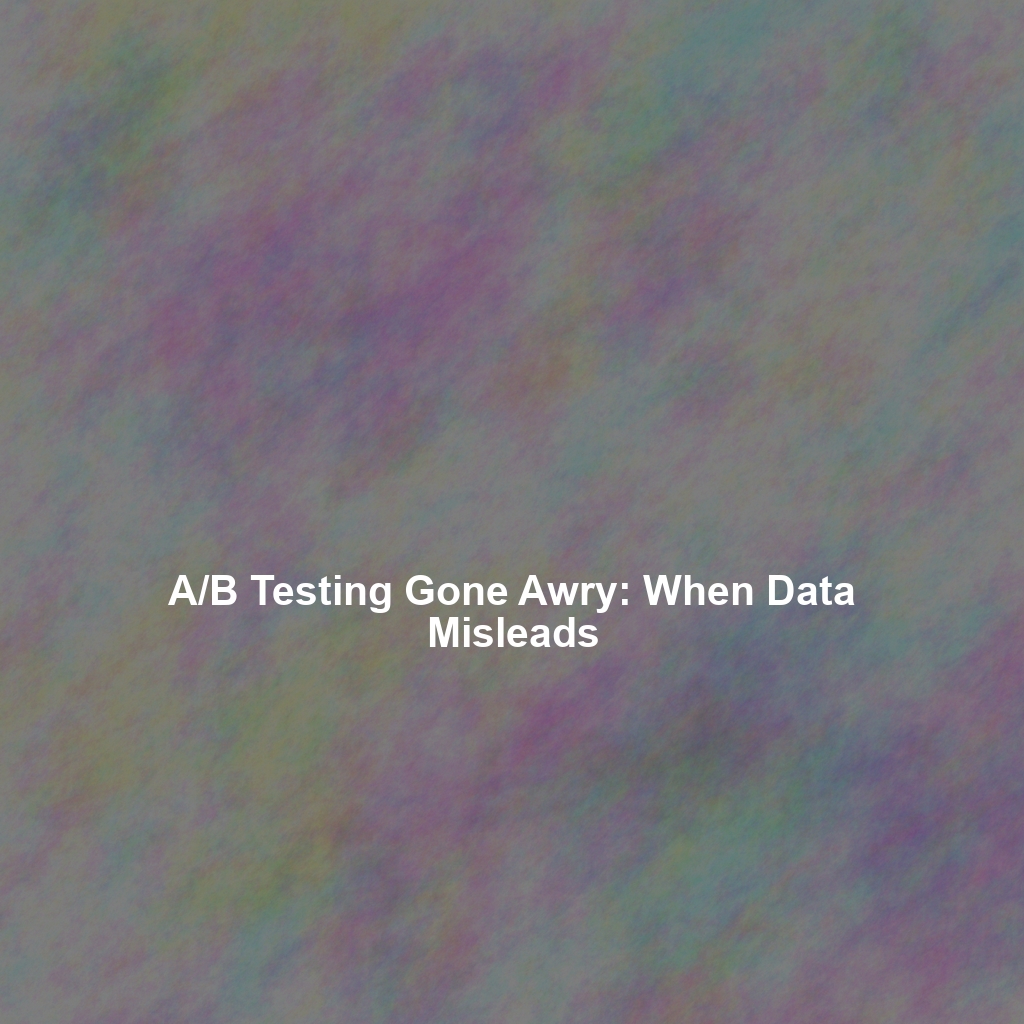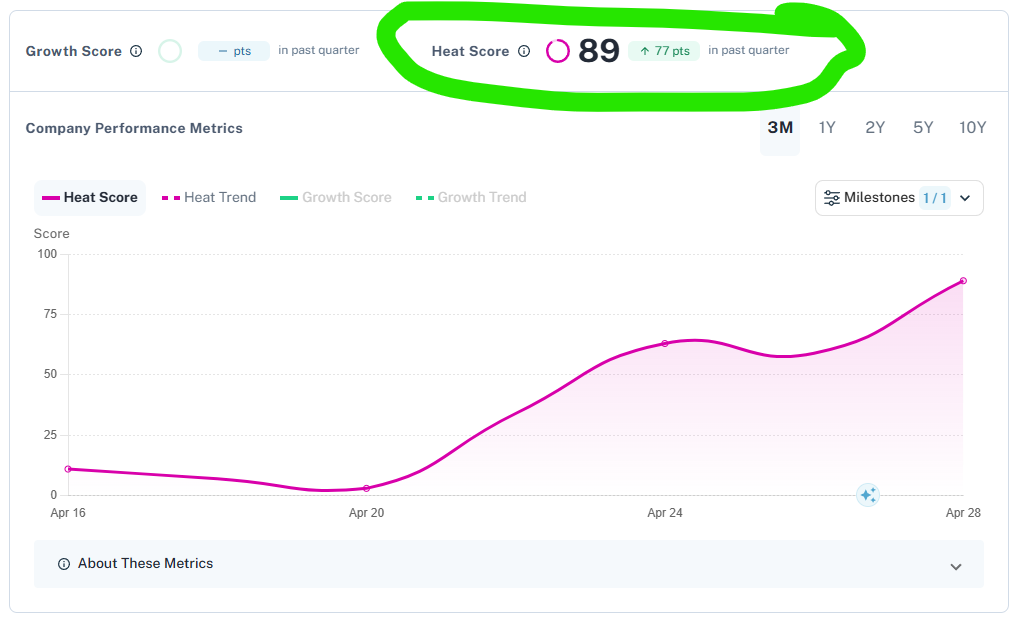The Allure and the Peril: A/B Testing and Its Pitfalls
A/B testing, also known as split testing, is a cornerstone of modern marketing. The premise is simple, elegant, and seemingly foolproof: present two versions of something (a webpage, an email subject line, an ad) to different segments of your audience, and then measure which version performs better based on a chosen metric. The version with the higher conversion rate, click-through rate, or whatever key performance indicator (KPI) you’re tracking, becomes the winner. But what happens when this seemingly scientific process goes horribly, hilariously, wrong? What happens when the data misleads?
The truth is, A/B testing, while powerful, is far from infallible. It’s a tool, and like any tool, it can be misused, misinterpreted, or simply applied in the wrong situation. When that happens, the results can be comical at best, and catastrophic at worst, leading to disastrous marketing decisions that cost time, money, and even brand reputation. Let’s delve into the shadowy corners where A/B testing goes astray, and explore the lessons we can learn from these cautionary tales.
Statistical Significance: A Misunderstood Master
The concept of statistical significance is often the first stumbling block. It refers to the probability that the difference in performance between two versions of your test is not due to random chance. A common threshold is 95%, meaning there’s only a 5% chance the observed difference is simply a fluke. However, achieving statistical significance doesn’t automatically guarantee your winning version is truly superior.
Imagine you’re A/B testing two different headlines for your website. Version A performs slightly better than Version B, and the results show a statistical significance of 96%. Great, right? Not necessarily. Consider these factors:
- Sample Size: Did you test enough users? A small sample size can lead to statistical significance even with minor, meaningless differences.
- Test Duration: Did the test run long enough to capture variations in user behavior? Seasonal trends, weekday vs. weekend traffic, or even external events can skew results.
- Multiple Comparisons: If you’re running multiple A/B tests simultaneously, the probability of finding a statistically significant result purely by chance increases dramatically. This is known as the multiple comparisons problem.
Ignoring these factors can lead to false positives, where you declare a winner that is, in reality, no better (or even worse) than the original.
The Tyranny of the Short-Term Metric
A/B testing often focuses on immediate, easily measurable metrics like click-through rates or conversion rates. However, optimizing solely for these short-term gains can have unintended consequences in the long run. Consider the following hypothetical scenario:
A subscription-based company A/B tests two different onboarding flows. Version A offers a free trial with no credit card required, while Version B requires users to enter their credit card details upfront. Version A sees a significantly higher number of sign-ups during the trial period. It appears to be the clear winner. However, after the trial period ends, the company discovers that the conversion rate from trial users to paying subscribers is much lower for Version A. Why? Because users who signed up without providing payment information were less invested and less likely to convert. Version A boosted short-term sign-ups but ultimately hurt long-term revenue.
This illustrates the importance of considering the entire customer journey and the long-term impact of your A/B testing decisions. Don’t get so caught up in immediate gains that you sacrifice customer loyalty, brand perception, or overall business objectives.
Segmentation Sins: Ignoring the Nuances
A/B testing assumes a homogenous audience, but in reality, your customers are diverse, with varying needs, preferences, and behaviors. Failing to segment your audience properly can lead to misleading results and ineffective marketing strategies.
For instance, let’s say an e-commerce company A/B tests two different website layouts. Version A is minimalist and emphasizes product photography, while Version B is more text-heavy and provides detailed product descriptions. Overall, Version A performs better. However, a closer look at the data reveals that customers who are already familiar with the brand and its products prefer Version A, while new customers who are unfamiliar with the brand prefer Version B. By ignoring this crucial segmentation, the company risks alienating a significant portion of its customer base.
Effective A/B testing requires a deep understanding of your audience and the ability to segment them based on relevant criteria, such as demographics, purchase history, browsing behavior, or even their position in the sales funnel. This allows you to tailor your messaging and optimize your website for different segments, rather than trying to create a one-size-fits-all solution.
The Halo Effect and Other Cognitive Biases
Human psychology plays a significant role in A/B testing, often in ways that are difficult to predict. Cognitive biases, such as the halo effect (where a positive impression in one area influences our perception of other areas), can skew results and lead to inaccurate conclusions. If you make a change to a page that generally improves the user experience, you might see lifts in metrics across the board, even if those metrics aren’t directly related to the change you made. This can be falsely attributed to the specific test variant.
Similarly, the novelty effect can cause a temporary surge in user engagement when a new design or feature is introduced, only to fade away over time. This can lead to premature conclusions and the adoption of changes that are ultimately unsustainable.
To mitigate the impact of cognitive biases, it’s essential to be aware of their existence and to design your A/B tests carefully to minimize their influence. This may involve running tests for longer periods, using control groups, and carefully analyzing the data for anomalies or unexpected patterns.
The Echo Chamber: Testing in a Vacuum
A/B testing should never be conducted in isolation. It’s crucial to integrate it with other sources of data and insights, such as customer feedback, market research, and competitor analysis. Relying solely on A/B testing data can create an echo chamber, where you’re only hearing what you want to hear, and ignoring valuable information that could challenge your assumptions.
Imagine a company that A/B tests two different pricing strategies. Version A is a lower price with fewer features, while Version B is a higher price with more features. Version A performs better in the A/B test. The company implements it, only to discover that its competitors offer similar features at even lower prices. By ignoring market research and competitor analysis, the company made a decision based on incomplete information, ultimately harming its competitive position.
A/B testing should be seen as one piece of the puzzle, not the entire picture. By combining it with other data sources, you can gain a more holistic understanding of your customers and the market, leading to more informed and effective marketing decisions.
Technical Glitches and the Perils of Implementation
Even a perfectly designed A/B test can fall apart due to technical issues. A broken tracking pixel, a server error that disproportionately affects one variant, or a JavaScript conflict can all throw off the results and lead to erroneous conclusions. Imagine launching a new landing page design based on A/B test results, only to discover that the “winning” version had a bug that prevented some users from completing the checkout process. Ouch.
Thoroughly testing your A/B test setup is critical. Ensure that tracking is accurate, that all elements of the page are functioning correctly, and that there are no compatibility issues across different browsers and devices. Post-implementation monitoring is also important to catch any unexpected problems that may arise after the test has concluded.
The Case of the Confusing Button
Sometimes, the seemingly smallest details can have the biggest impact, and can also be misinterpreted. Take, for example, a company that tested two button colors, blue and orange, on their call-to-action. The orange button showed a statistically significant increase in click-through rate. Elated, they rolled out orange buttons everywhere. However, they later discovered that the orange button only performed better on pages with a predominantly blue color scheme. On pages with orange or red schemes, the blue button outperformed the orange one. The context mattered immensely, but the initial analysis missed this crucial detail.
The Ethics of Experimentation
Finally, it’s crucial to consider the ethical implications of A/B testing. While most A/B tests are harmless, some can be manipulative or even harmful, particularly when they involve deceptive pricing, misleading messaging, or the exploitation of user vulnerabilities. Transparency and informed consent are essential. Users should be aware that they are participating in an experiment, and they should have the ability to opt out if they choose. Building trust with your customers is paramount, and sacrificing that trust for short-term gains is never a worthwhile trade.
Conclusion: A/B Testing – Use Wisely, Interpret Carefully
A/B testing is a powerful tool for optimizing your marketing efforts, but it’s not a silver bullet. By understanding the potential pitfalls and avoiding common mistakes, you can harness its power effectively and avoid the embarrassing and costly consequences of data gone wrong. Remember to focus on long-term objectives, segment your audience effectively, be aware of cognitive biases, integrate A/B testing with other data sources, test your setup thoroughly, and always prioritize ethical considerations. With a healthy dose of skepticism and a commitment to rigorous analysis, you can ensure that your A/B testing efforts lead to meaningful and sustainable improvements in your marketing performance.
“`





Leave a Reply